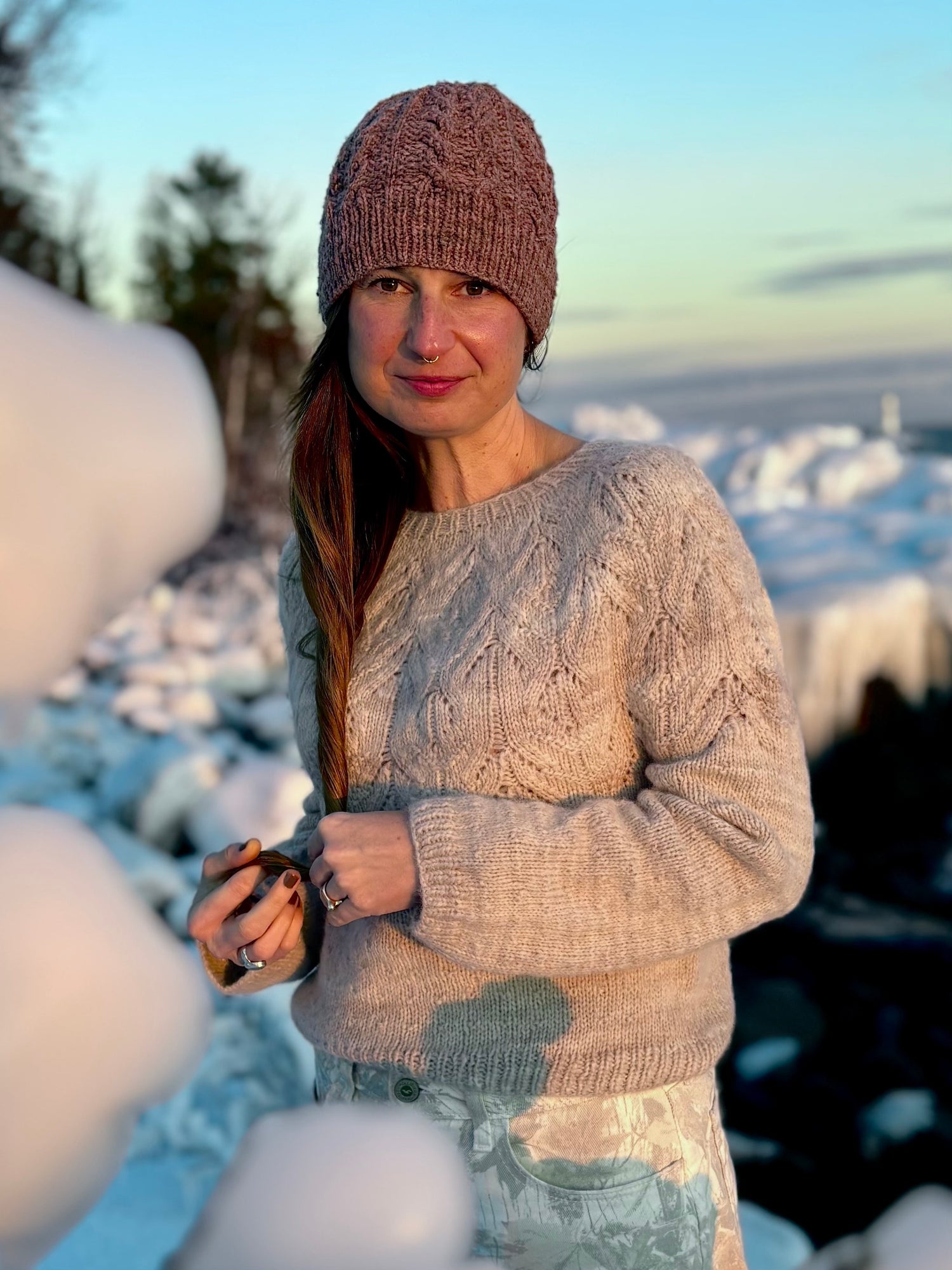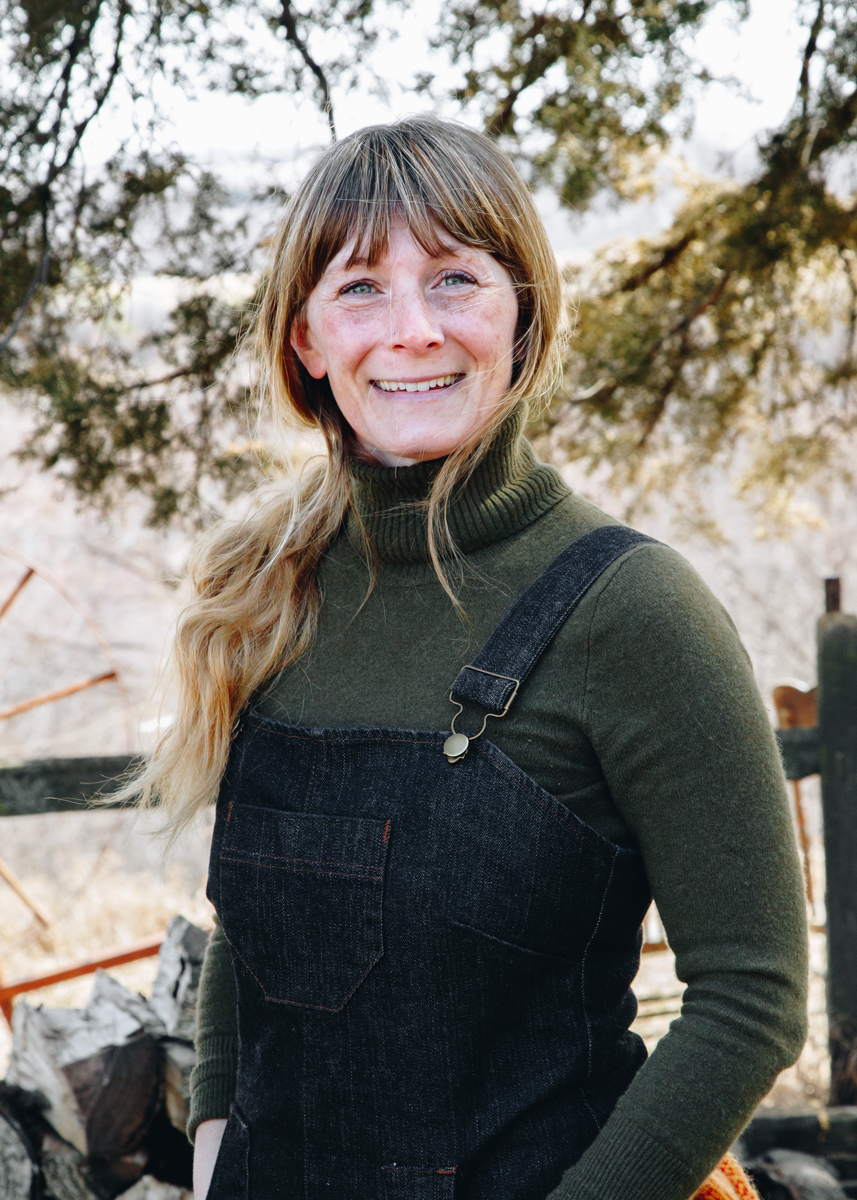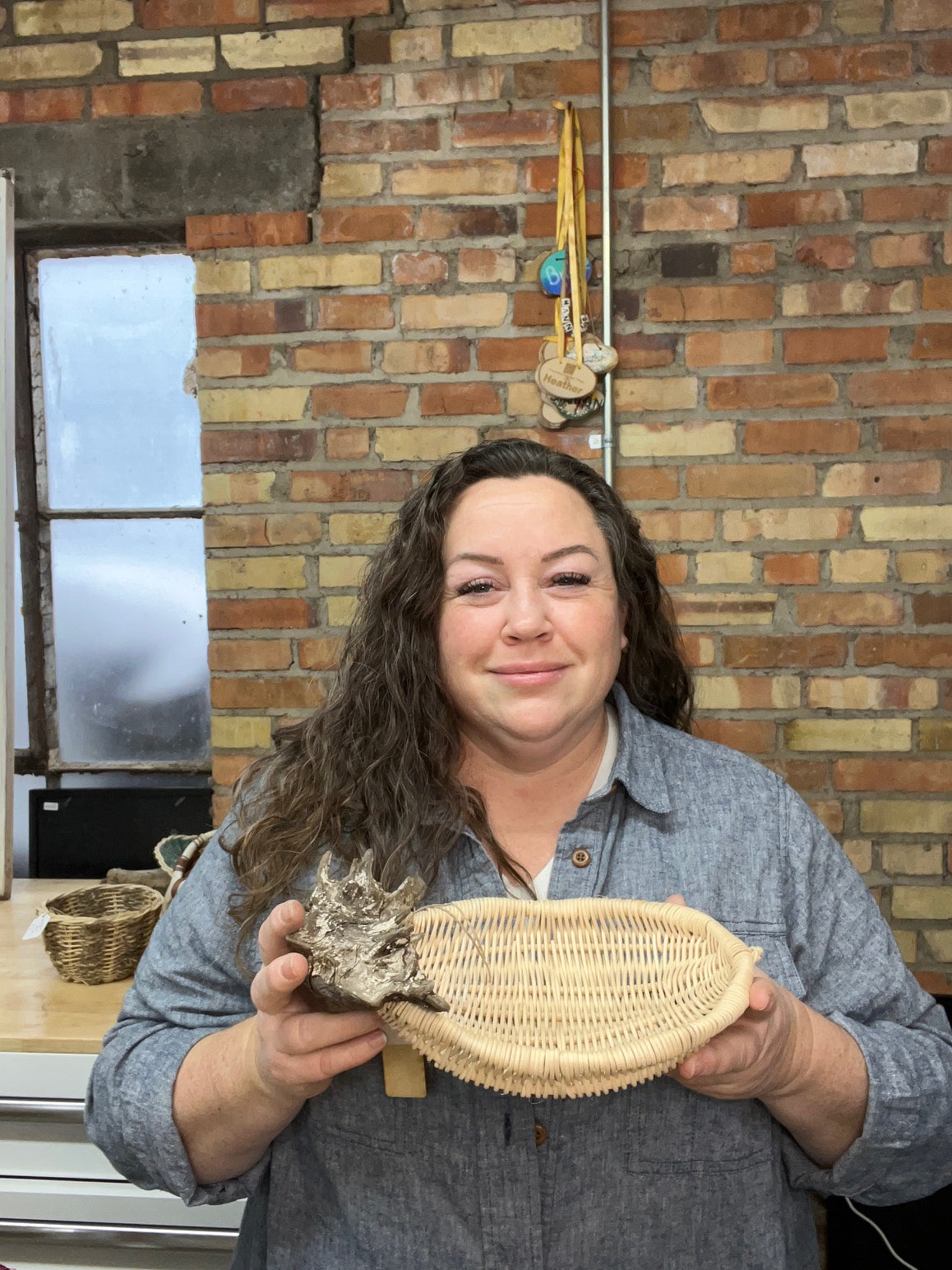Instructors 2026

Brienne Moody
Brienne Moody is a knitwear designer, teacher, and creative guide. Through her thoughtful patterns and intuitive teaching style, Brienne helps makers connect more deeply to their materials, their hands, and their creative instincts.
Her sweater design, Brienne, was published in Neons & Neutrals by La Bien Aimée, and her work has also appeared in Taproot magazine. Her designs—like the Fogline stitch series encourage exploration and play. Brienne believes in the life-changing power of movement and craft in community. Her teaching helps knitters notice how their personal stories are woven into their stitches.
When she’s not designing, she’s wrangling two spirited teenagers, three dogs, and a wild schedule of group fitness classes and coaching. She lives for strong coffee, stillness, and shared creative spark.

Theresa Bentz
Theresa Bentz is co-owner of Get Bentz Farm, a 40 acre farm located outside of Northfield MN. Theresa and her husband raise Icelandic sheep and Icelandic Cross sheep for meat and wool, and use sustainable methods to manage their sheep. Theresa is an avid spinner and knitter and fell deeply in love with wool and fiber types while raising sheep. In April of 2020, the farm purchased a wool mill to process locally sourced fleeces into roving and rug yarn. As a hand spinner, Theresa wanted to bring the skills she has gained over the years in processing fleeces to her mill, focusing the mill on providing high quality roving for spinners and felters, as well as teaching spinning classes. Over the years the mill grew and added on, and now spins a local yarn from MN and tri state area fibers in small batches under the Badgerface Fiber brand. Theresa has her fingers on the pulse of the MN wool market, purchasing wool from shears and working directly with shepherds, this has encouraged Theresa to look into new ways to increase the value of American wool. Theresa and Maddy Bartsch, President of the Three Rivers Fibershed and owner of Salt of the North Dye Garden (which is on the Bentz Farm) applied for grant funding to develop and test new products using 100% wool, that could be applied in home and agricultural settings. The two have formed at new Cooperative (Yan Tan Wool Cooperative) which will allow them to continue developing this new product along side the U of M speciality crop department and Agricultural Utilization and Research Institute (AURI).
Theresa loves to chat about wool breeds and sheep in general, and really enjoys seeing Farm Fresh Yarn in the hands of fiber artists.

Shannon Westrum
My love of texture and fibers started when I convinced our elderly neighbor to teach me to crochet as a child. I spent hours creating with yarn, wood, beads, paper, and leather. From there, it was a continuous weave of materials and techniques, adding some here, discarding there. I was a maker. I began serious practice as a basket maker in my early 20’s with local community education and fiber arts guilds. When I became a mom, I divided my time between work and my girls, so art took an intermission. Five years later, a my small daughter looked up at me and doubted my claim that I did, in fact, make the basket in her hands. She had never seen me create anything, not really, in her entire life. I made the decision in that moment that I wanted my daughters to understand all that we could do together. We made a change and I re-embraced the artist I knew myself to be. I began weaving at home, developing my own style. Then seeking out opportunities to learn wherever I could find them. My work is a blend of cultures, traditions, and technical skills. I've spent years asking questions about culture and tradition and how I represent them in my art. I live in an area surrounded by Native lands, and in fact grew up learning Ojibwe art in school, as it was the only art instruction available to me other than drawing or painting. I do not work with those art forms as they are not mine culturally. This lead me to search for, and pursue, learning traditional European weaving techniques and materials, learning from weavers from around the United States, from Spain, and Denmark. From there, I took a pilgrimage to Ireland, working with Joe Hogan, a traditional Irish basket maker turned modern artist, followed by an arts residency at Shankill Castle in Kilkenny, IE. As an American, their cultures and traditions are only ancestrally mine, though their technical aspects are now part of my practice. I blend my years of study and research into my body of work, creating my own style and techniques. I am now exploring the fusion of modern and traditional techniques with locally sourced materials as they apply to art basketry. It’s not unusual for a family excursion to include my teenagers beach combing for driftwood and interesting rocks, or into the forest to collect grasses, tree barks, antlers, and rushes. I’m moved to create unique sculptural shapes that flow with and emphasize the natural elements I’ve used as my focal points. These materials are combined with primary materials of round reed (rattan) or willow to create both sculptural pieces and those with practical uses. As an artist from a small rural area, the bridge between art and craft is a narrow one that I want to continue to explore. Art basketry falls into uncharted waters, fiber arts, mixed media, sculpture; it varies piece by piece.
